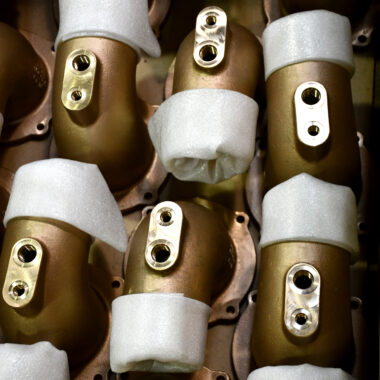Dive Deep: Insights About Aluminum Casting Processes
Wiki Article
Crafting Excellence: Just How to Attain High-Quality Light Weight Aluminum Castings Whenever
In the world of light weight aluminum spreading, the search of excellence is a constant trip that needs a thorough approach and an eager understanding of the ins and outs included. Attaining regular premium light weight aluminum castings demands an extensive understanding of the processes, from choosing the suitable alloy to implementing accurate mold designs and carefully regulating casting criteria. The true proficiency lies in the capability to apply these components perfectly to produce perfect castings every time. As we discover the ins and outs of crafting excellence in aluminum castings, uncovering the vital methods and strategies that result in impeccable outcomes comes to be paramount for those pursuing excellence in this specific field.Comprehending Aluminum Casting Processes
Aluminum casting processes, crucial in the production sector, involve the complex transformation of liquified aluminum right into solid types through a series of very carefully controlled actions. Comprehending these processes is critical to attaining high-grade light weight aluminum castings consistently - about aluminum casting. The primary techniques used in aluminum spreading are die spreading, sand casting, and financial investment casting
Each of these procedures has its benefits and is selected based on elements like intricacy, quantity, and preferred surface of the light weight aluminum casting. about aluminum casting. Recognizing the complexities of these methods is essential for producers intending to create premium aluminum spreadings constantly
Picking the Right Light Weight Aluminum Alloy
Choosing the proper aluminum alloy is an essential decision in the manufacturing of top quality aluminum spreadings. The selection of alloy considerably impacts the residential or commercial properties and characteristics of the end product. Different aluminum alloys use varying degrees of strength, corrosion resistance, machinability, and thermal conductivity. When choosing an aluminum alloy for casting, it is essential to consider the specific requirements of the application to make certain optimum performance.One of the most typically utilized light weight aluminum alloys for casting is A356 - about aluminum casting. For applications requiring high stamina, 7075 light weight aluminum alloy is a preferred choice due to its extraordinary strength-to-weight ratio.
Along with mechanical properties, factors to consider such as expense, schedule, and post-casting processes must also affect the option of the best aluminum alloy. By thoroughly examining these variables, suppliers can ensure the manufacturing of top notch aluminum spreadings that meet the wanted specs.
Applying Correct Mold And Mildew Layout
Developing an efficient mold and mildew design is critical for guaranteeing the effective production of top notch light weight aluminum castings. Correct mold style plays a considerable function in achieving the preferred qualities of the end product. To apply an effective see page mold layout, aspects such as material flow, cooling prices, and component geometry have to be meticulously taken into consideration.One key facet of mold design is making sure appropriate filling and solidification of the light weight aluminum within the mold dental caries. This entails developing jogger and gating systems that promote smooth metal circulation and stop issues such as air entrapment or insufficient filling. Furthermore, integrating cooling channels right into the mold and mildew layout helps regulate solidification rates and minimize the risk of porosity or shrinkage problems.

Controlling Spreading Parameters

Ensuring Post-Casting High Quality Checks
To maintain the high quality of light weight aluminum spreadings, comprehensive post-casting quality checks are necessary. After the casting process is completed, it is crucial to guarantee that the last items fulfill the wanted requirements and criteria.Dimensional precision is one more vital aspect that must be verified throughout post-casting quality checks. Dimensions of vital dimensions and tolerances need to be taken to confirm that the spreadings satisfy the called for requirements. Furthermore, mechanical buildings such as hardness, tensile strength, and impact resistance may require to be examined via material testing to make sure that the castings have the essential toughness and durability for their intended application.
Final Thought
Finally, attaining high-grade aluminum spreadings requires a complete understanding of the casting processes, choosing the proper alloy, designing mold and mildews effectively, regulating spreading parameters diligently, and performing post-casting top quality checks carefully. By complying with these actions, manufacturers can continually generate light weight aluminum spreadings that satisfy the highest requirements of high quality and performance.Achieving constant high-quality light weight aluminum spreadings demands an extensive understanding of the processes, from picking the suitable alloy to performing precise mold designs and thoroughly regulating casting specifications. The primary techniques made use of in aluminum casting are pass away casting, sand spreading, and financial investment spreading.
Investment casting, additionally understood as accuracy casting, includes creating wax patterns that are covered in ceramic to develop molds.Choosing the suitable light weight aluminum alloy is explanation a critical choice in the manufacturing of premium light weight aluminum spreadings.Making sure exact control over casting specifications is important for maintaining consistency and quality in aluminum spreading manufacturing.
Report this wiki page